Whether it’s for a spooky Halloween jack-o’-lantern, a flavorful Thanksgiving pie, or just some charming autumn decorations, growing your own pumpkins can be a rewarding experience. This ultimate guide will help inform you about all the basics that you need to know to grow perfect pumpkins.
Selecting the Correct Variety of Pumpkin
Pumpkins come in a large range of shapes, sizes, and colors from the traditional orange to lighter colors. There are over 150 varieties worldwide and each variety has its own unique characteristics that make it suitable for different purposes.
Here are some common pumpkin varieties and their purposes:
Jack-O’-Lantern Pumpkins (varieties: Captain Jack):
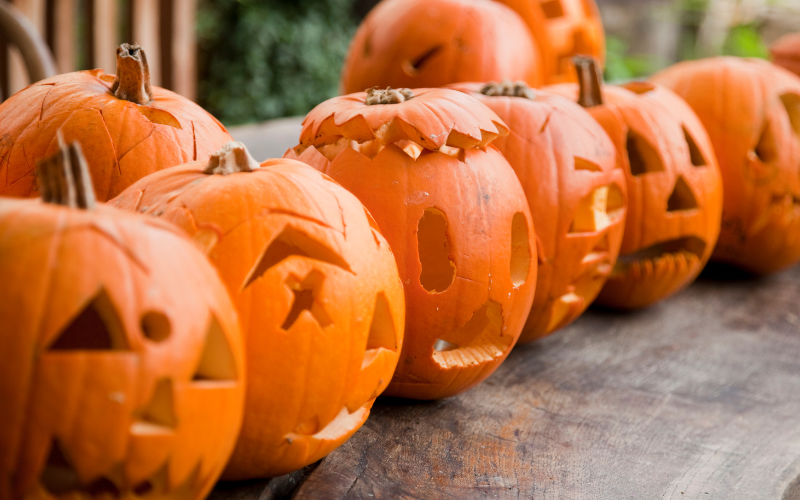
These pumpkins are specifically bred for carving and making Halloween jack-o’-lanterns. They have thick, sturdy skin and a hollow interior, making them perfect for creating spooky designs and placing candles inside.
Pie Pumpkins (varieties: Sugar Pie, Baby Pam, Peanut, Long Island Cheese, Cinderella):
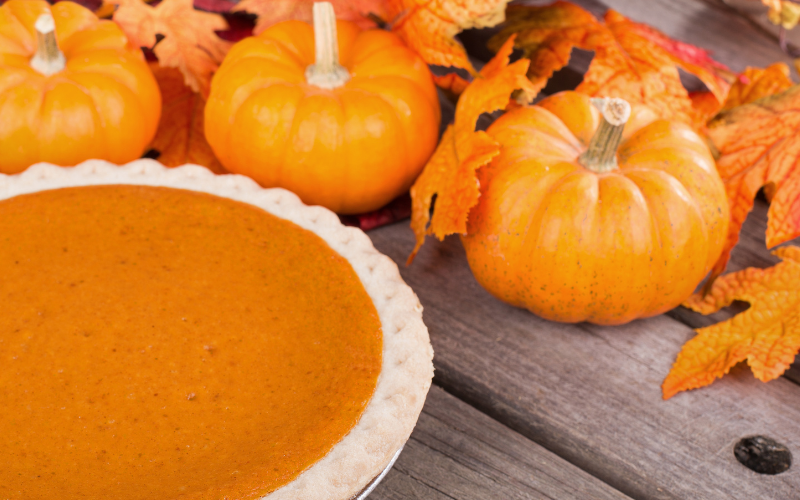
These smaller pumpkins are known for their sweet, fine-grained flesh. They are excellent for making pumpkin pies, pumpkin bread, and other baked goods. The flesh is less watery and has a rich, sweet flavor, making it perfect for cooking.
Long Island Cheese pumpkins resemble a wheel of cheese in shape and color. They have sweet, smooth-textured flesh, making them a favorite for pies, soups, and other recipes.
As you may have guessed Cinderella pumpkins are named after the fairy tale. These pumpkins are prized for their striking, deep-red color and flattened, ribbed shape. They are often used for decoration but can also be used for pies and other culinary applications.
Miniature Pumpkins (varieties: Jack Be Little, Baby Boo, Munchkin):
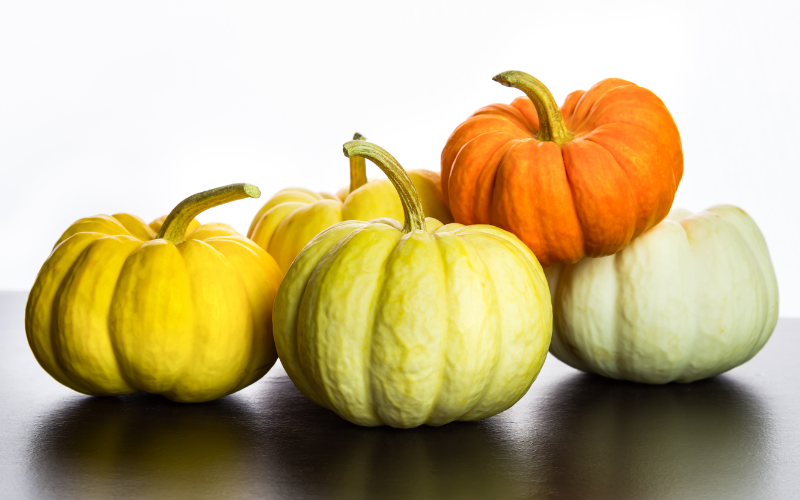
Miniature pumpkins are primarily used for decorative purposes. They are perfect for fall centerpieces, table displays, and crafting projects. While they can be eaten, their small size and relatively thick skin make them less popular for culinary uses.
Non-traditional Colored Pumpkins (varieties: Baby Boo, Buttercup, Lumina, Jarrahdale)
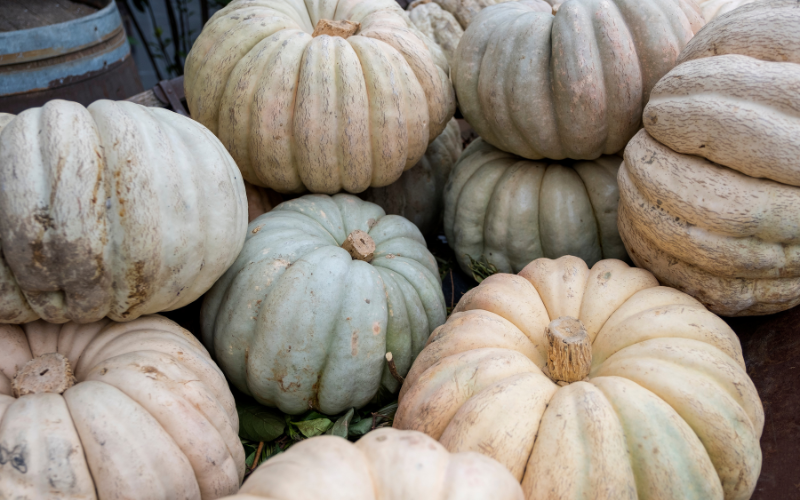
When most of us think of pumpkins we immediately picture the traditional orangish-yellow pumpkins but pumpkins come in a range of colors.
- Baby Boo pumpkins are charming and petite, with a pure, ghostly white color that adds a touch of elegance to autumn decorations.
- Buttercup pumpkins have a distinct round, flattened shape and dark green skin with a lighter, orange spot. They have sweet, dense flesh and are commonly used for roasting, baking, or making creamy soups.
- Lumina pumpkins are known for their ghostly white skin. They are great for creating unique and eye-catching Halloween decorations. While they are edible, they are typically used more for their aesthetic appeal.
- Jarrahdale pumpkins have stunning blue-green skin and sweet, dense, orange flesh. They are often used for cooking and baking, especially in soups and stews. Their unique appearance also makes them suitable for fall decor.
Giant Pumpkins (varieties: Atlantic Giant, Big Moose, Big Max):
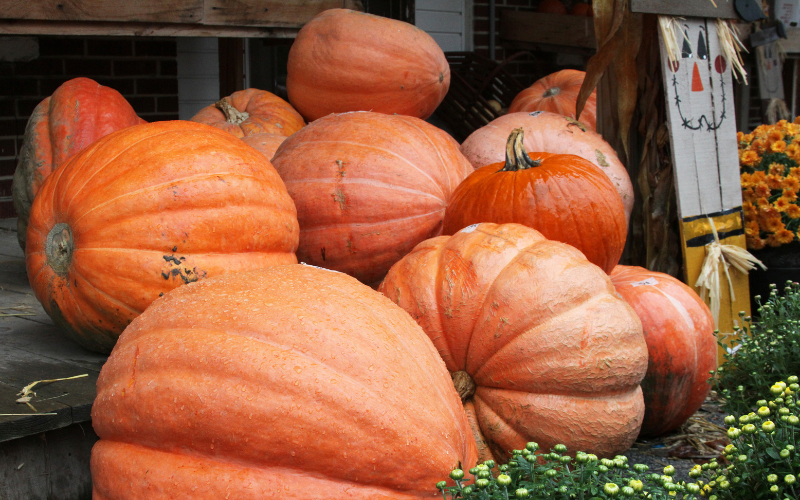
Giant pumpkins, as the name suggests, are grown for size competitions. While they are not typically used for culinary purposes due to their tough flesh and size, they are impressive to see at fairs and contests.
Choosing the correct location for your pumpkin plants
Choose a sunny location and spacious location with at least 6-8 hours of direct sunlight each day.
Pumpkins require a substantial amount of space to thrive, as their vigorous vines can quickly spread across your garden surface. They can reach areas up to 20 feet or more from where they have been planted.
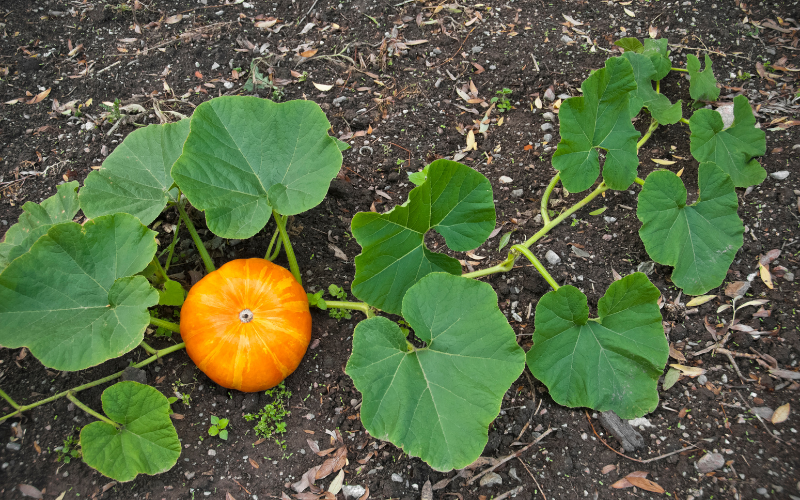
Test your soil and amend it with compost or organic matter to improve fertility. Ensure the soil pH is around 6.0-6.5, slightly acidic, which is ideal for pumpkin growth. Pumpkins don’t like sitting in waterlogged soil so making sure that your soil has good drainage can help prevent root rot and other moisture-related issues.
Planting pumpkins
Pumpkins are warm-season vegetable plants that are sensitive to cold temperatures and are intolerant of frost. The optimal air temperature range for growing pumpkins is 70 – 85°F (21 – 30°C).
On average, it takes approximately 90 to 120 days for most pumpkin varieties to reach maturity. So you should make sure that you’ll have adequate warm weather from the time you plant your pumpkin seeds until they are mature.
In temperate regions, pumpkin seeds are usually planted in late spring to early summer. This usually falls between late May and early June in the Northern Hemisphere and from September through November in the Southern Hemisphere.
In the tropics, pumpkins can technically be grown all year round but its best to plant your seeds late in the wet season or early in the dry season.
You should consider your local conditions, and consult local gardening resources or experienced gardeners in your area to find out the most accurate time to plant pumpkin seeds.
Pumpkin seedlings don’t do well with being transplanted (grown indoors or in a nursery and then moved to the garden). Pumpkin seeds sprout fastest at temperatures of 77-95°F (25-35°C), they can also sprout at temperatures of around 68°F (20°C) but will take about 15 days or more. Germination temperature for other vegetables

If you have a short growing season and have no choice but to start seeds indoors, do so about 2-4 weeks before the last expected frost and transplant seedlings when they have two true leaves.
Plant 2-3 pumpkin seeds together about 1 inch deep, keeping 24-36 inches between each group. Thin to the healthiest seedling after they’ve sprouted. Proper plant spacing for different vegetables and herbs
Watering pumpkin plants
Pumpkins need consistent watering throughout the growing season. About 1-2 inches of water per week will be sufficient in moderately warm temperatures. Plants grown on the ground can be watered once a week, while plants grown in containers will have to be watered once a day. The amount and frequency of watering may need to be increased during dry spells.
Water at the base of the plants to avoid wetting the foliage, which can lead to diseases like downy mildew and powdery mildew that pumpkin plants are highly susceptible to.
Fertilizing pumpkin plants
Pumpkins are heavy feeders, so they require regular fertilization. Compost, a balanced all-purpose fertilizer, or a specialized pumpkin fertilizer can be applied. Apply the first round of fertilizer when the plants are about 2-3 weeks old, and then every 2-4 weeks thereafter.
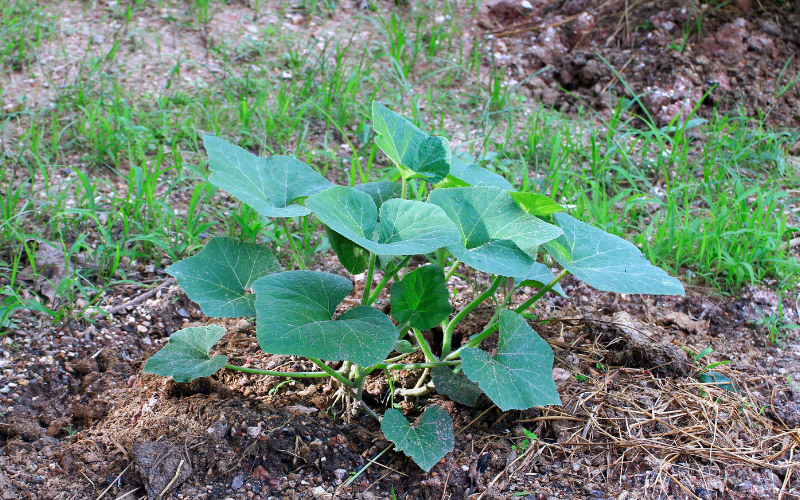
Managing pests and diseases in pumpkins
Pumpkins can be susceptible to various pests and diseases. Keep an eye out for these common issues that are likely to affect your pumpkin plants:
Pests: Squash Bugs, Cucumber Beetles, Aphids, Vine Borers, Spider Mites, Slugs and Snails
Diseases: Powdery Mildew, Downy Mildew, Bacterial Wilt, Anthracnose, Fusarium Wilt, White Mold, and Viral diseases like cucumber mosaic virus (CMV) and zucchini yellow mosaic virus (ZYMV)
Preventing and managing these pests and diseases involves a combination of gardening practices, including crop rotation, choosing disease-resistant pumpkin varieties, practicing good garden hygiene, biological control, organic or chemical controls when necessary, and monitoring your plants regularly.
Harvesting pumpkins
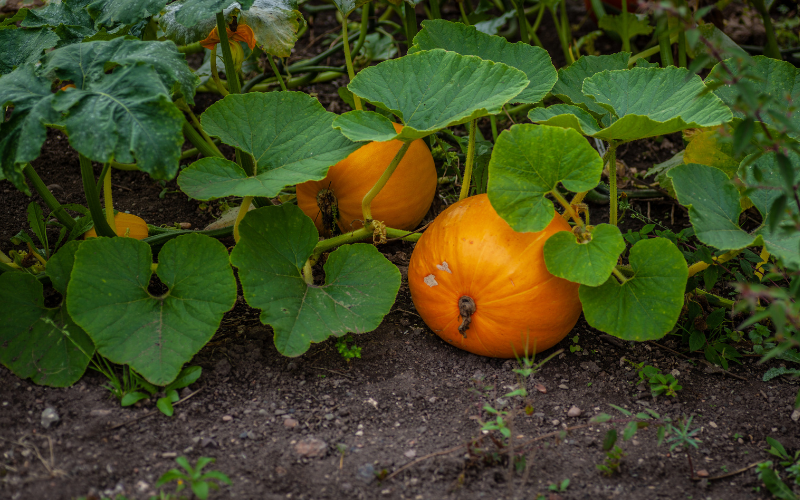
Knowing when to harvest is crucial for the best pumpkin flavor and quality. Here’s how to tell when your pumpkins are ready:
- Size: Be aware of the typical size of the variety you are growing and consider harvesting when they have reached the expected size.
- Skin color: pumpkins are ready for harvest when the skin has developed a deep, consistent color and lost its immature greenish tint.
- Skin texture: If the skin of the pumpkin resists puncture and feels hard when you gently press your fingernail into its skin, it’s likely mature and ready for harvest. Immature pumpkins have softer skin that can be easily punctured.
- Dried, brown stems: If the stem of your pumpkin is green and flexible, the pumpkin may not be fully mature. A ripe pumpkin will have a dried, brown stem.
- Thumping Test: Gently thump the pumpkin with your knuckles. A mature pumpkin should sound hollow, while an immature one may sound dull.
In addition, if you live in an area with the potential for frost, it’s important to harvest your pumpkins before the first frost. Even a light frost can damage the pumpkins and affect their quality.
Once you’ve determined that your pumpkin is ready for harvest, use pruning shears or a sharp knife to cut the pumpkin from the vine, leaving a few inches of stem attached. A sturdy stem helps prolong the pumpkin’s shelf life.
Curing and Storage
Curing pumpkins helps improve their storage life and flavor. Once cured, pumpkins can be kept for several months as long as they are stored in a cool, dry, and dark place.
Curing involves encouraging pumpkins to develop hard, protective skin, which in turn reduces the risk of rot. To cure pumpkins, you’ll need to place them for about 10 days in a warm, dry place with good air circulation. They can even be placed in the sun to speed up this process.
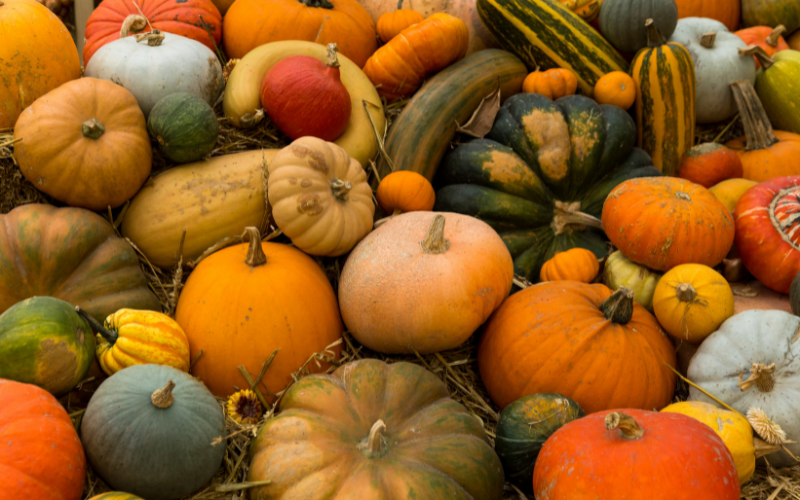
Growing pumpkins can be a fun and rewarding endeavor, no matter the reason that you are growing them. By selecting the most suitable variety, planting them in the best location, at the best time, and the right soil conditions, tending to your plants, and following proper harvesting and storage techniques, you’ll be well on your way to growing perfect pumpkins!

